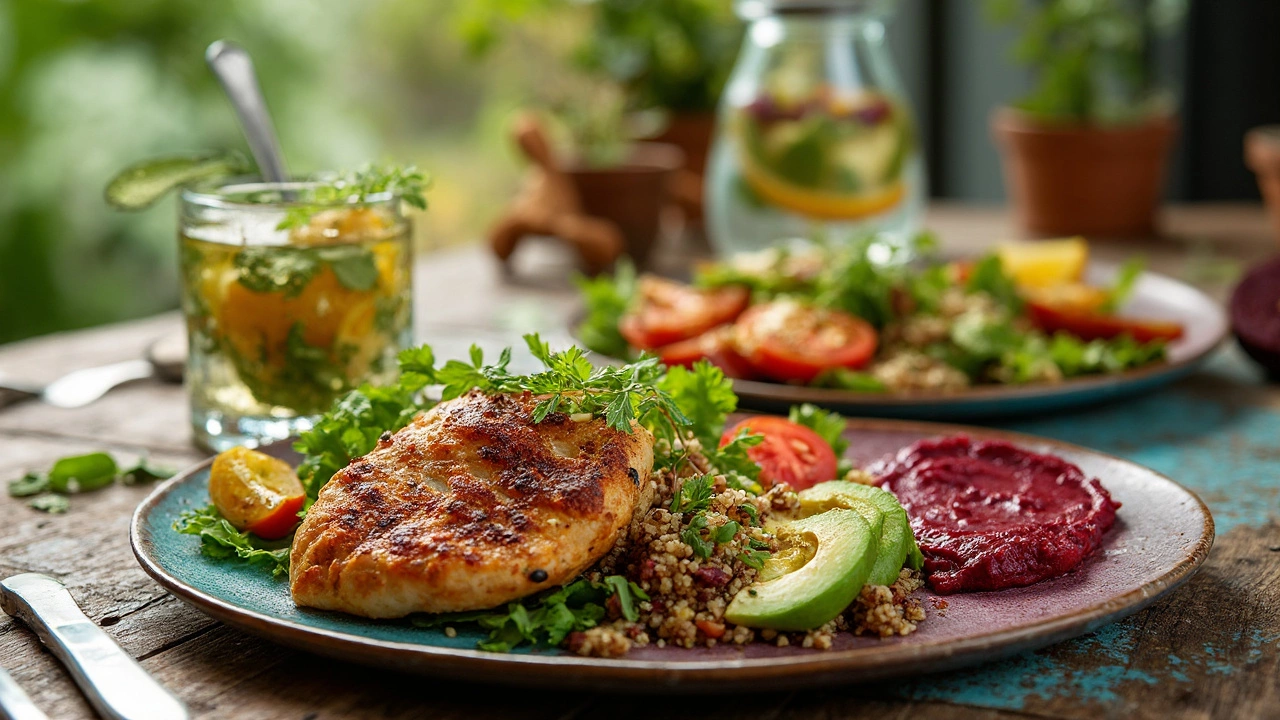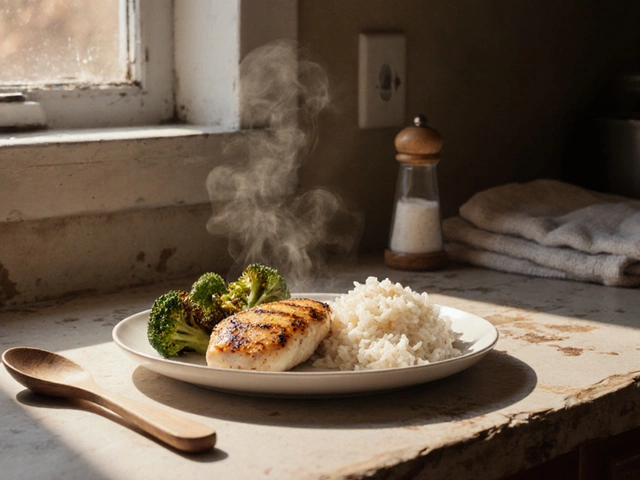Nutrition Tips for Everyday Cooking
Eating well doesn’t have to be a headache or break the bank. Whether you’re new to Indian spices or a seasoned cook, a few smart habits can make every meal healthier and tastier.
Start With Whole Ingredients
Choose fresh veggies, beans, and whole grains as the base of your dishes. A bowl of lentils, a handful of spinach, and a scoop of brown rice give you protein, fiber, and steady energy. When you add a pinch of cumin or turmeric, you boost flavor without extra salt or sugar.
Control Portion Size Without Counting Calories
Fill half of your plate with vegetables, a quarter with lean protein like chicken, tofu, or chickpeas, and the remaining quarter with carbs. This visual guide keeps portions balanced and saves you from endless calorie math.
One handy trick is to use the palm of your hand as a guide. A palm‑sized portion of protein, a fist of carbs, and two fists of veggies work for most adults. It’s quick, no scales needed.
Boost Nutrition With Simple Add‑Ons
Spices aren’t just about taste; many have health benefits. Turmeric contains curcumin, which may reduce inflammation. A dash of black pepper helps your body absorb it better. Sprinkle some chopped cilantro or mint for a fresh lift of vitamins and antioxidants.
Don’t forget nuts and seeds. A tablespoon of toasted pumpkin seeds adds crunch, healthy fat, and magnesium. They’re easy to toss into salads, stir‑fries, or even a quick dal.
Keep It Budget‑Friendly
Buy beans and lentils in bulk—they store forever and are cheap protein powerhouses. Frozen peas or mixed veggies are usually less expensive than fresh and keep nutrients intact. Use leftovers creatively: turn yesterday’s roasted veggies into a tasty wrap or soup.
When you plan meals around seasonal produce, you naturally cut costs. In autumn, root veg like carrots and sweet potatoes are at their peak. Roast them with a drizzle of olive oil and a sprinkle of garam masala for a warm, nutrient‑dense side.
Smart Cooking Methods
Steaming, grilling, and sautéing with a little oil preserve nutrients better than deep‑frying. If you use a slow cooker, add the leafy greens in the last 30 minutes so they stay bright and nutritious.
Quick tip: when you’re making a curry, start with onions, ginger, and garlic. They create a flavor base and also bring antioxidants. Then add your main ingredient and finish with a splash of lemon juice for extra vitamin C.
Hydration And Mindful Eating
Drink water throughout the day; sometimes thirst masks as hunger. Before you sit down, take a deep breath and think about what you’re about to eat. This pause helps you enjoy the flavors and recognize when you’re satisfied.
Remember, nutrition isn’t a strict rulebook. It’s about making small, sustainable changes that fit your life. Swap a sugary drink for spiced tea, add a handful of greens to a rice bowl, and watch how quickly those tweaks add up.
Try one tip this week—maybe a new spice, a veggie‑focused plate, or a bulk‑bean purchase. You’ll see that healthy eating can be simple, affordable, and full of flavor.

Healthiest Lunch Ever: Build the Ultimate Power Plate
by Landon Weathers / 22 May 2025Ever wondered what the healthiest lunch looks like? This article lays out the science and simple steps behind a lunch that checks every box—filling, tasty, and super good for you. Discover how to build a balanced plate, why each component matters, and smart ways to make your lunch healthier without sacrificing flavor. It’s packed with real-life tips, ingredient swaps, and straight-up explanations anyone can use. Lunch just got a major upgrade.




